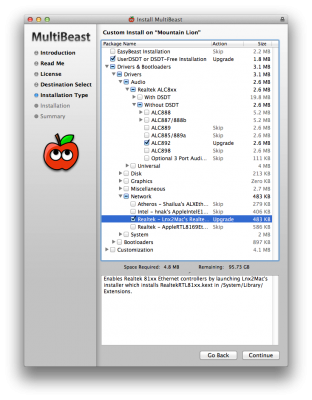- Joined
- Jul 1, 2013
- Messages
- 25
- CPU
- Intel Core i5-3570K
- Graphics
- EVGA GTX 660 Ti Superclocked
- Mac
- Classic Mac
- Mobile Phone
After I did the whole install and finally got into the operating system, what do I do with MultiBeast, and what drivers do I need for that motherboard. Is there anything else I need to do? My Asus USB-N53 Wireless Adapter doesn't seem to work either and I don't really have a long enough ethernet cable to reach my router. Would it be fine if I put other drivers onto another USB flash drive from my other computer and then install them on OSX? I need to have this build done in a few hours, please help.


